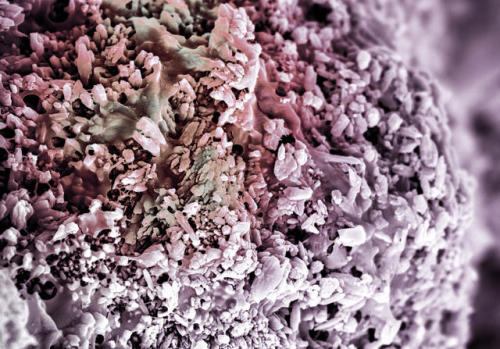Scanning Electron Micrographs of LimestoneLimestone, a sedimentary rock composed largely of the mine
Scanning Electron Micrographs of LimestoneLimestone, a sedimentary rock composed largely of the minerals calcite, dolostone and aragonite, which are different crystal forms of calcium carbonate (CaCO3).Most limestone is composed of skeletal fragments of marine organisms such as coral, forams and molluscs. These organisms secrete shells made of aragonite or calcite, and leave these shells behind when they die. The limestone in the top micrograph is surrounded by the natural world of halite and its brick-like structure. Halite, also known as rock salt, is a mineral formed through the evaporation of enclosed lakes, playas, and seas.The limestone in the bottom micrograph is a lithographic limestone coated with dolostone fragments and mucilage. Mucilage is a thick, gluey substance produced by nearly all plants and some microorganisms. It is a polar glycoprotein and an exopolysaccharide. Mucilage in plants plays a role in the storage of water and food, seed germination, and thickening membranes.Limestone is very common in architecture, especially in Europe and North America. Many landmarks across the world, including the Great Pyramid and its associated complex in Giza, Egypt, were made of limestone.Limestone is readily available and relatively easy to cut into blocks or more elaborate carving. Ancient American sculptors valued limestone because it was easy to work and good for fine detail.Images above ©Nano Creative / Science Source -- source link
Tumblr Blog : sciencesourceimages.tumblr.com
#geology#sedimentary#minerals#microscopic#science photos#stock photography#science source

